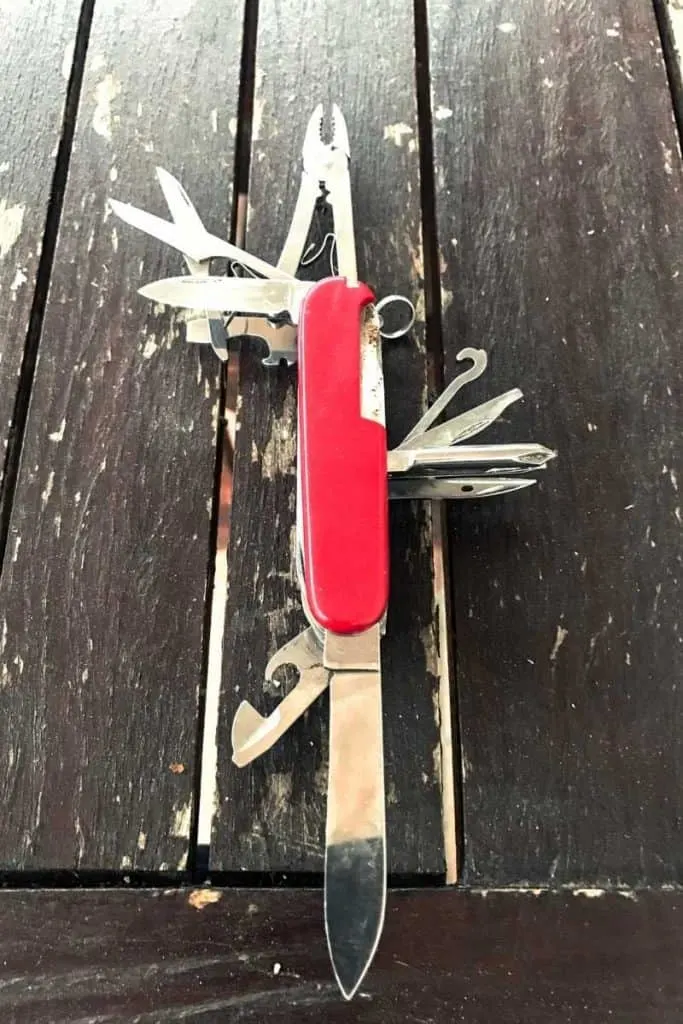- 11 Cool Vintage Things to Collect - December 27, 2021
- 6 Best Antique Telescopes For Décor and Functionality - December 27, 2021
- 10 Best Vintage Bread Boxes for Your Retro Kitchen - December 27, 2021
No other knife in history has earned quite the cultural significance as the Swiss Army Knife. Synonymous with versatility and inventiveness, it’s been a favorite of backpackers, boy scouts, survivalists, and knife collectors since its inception.
But have you ever wondered where such a unique knife could have come from? I did — which is why I dug deep into the history of the Swiss Army knife to put this timeline together for you. Read along, and you’ll discover the story of this army-issue knife’s entrance into pop culture stardom.
H2s will be years, follow up with what happened in that piece of the timeline.
Conclusion will be reference to contemporary Swiss Army Knives.
The Beginnings: Early Multi-Use Knives

Even though the Swiss Army Knife is the most recognizable multi-use knife, it wasn’t the first that was ever made. Herman Melville even makes a reference to multi-tools in Moby Dick, describing a tool that looked “like a common pocket knife” but also had “screw-drivers, cork-screws, tweezers, awls, pens, rulers, nail-filers and countersinkers.”
1884: Karl Elsener’s Knife Workshop
The Swiss Army Knife might never have come about were it not for the support of Victoria Elsener, mother to the inventor Karl Elsener. With her moral and financial support, Karl was able to open his first knife workshop in Ibach-Schwyz, Switzerland. As he forged his first blades, he was already hard at work designing an improved multi-use knife.
1890: Elsener’s First Contract With the Swiss Army
The Elseners’ perseverance paid off after six years, with Karl Elsener successfully winning a bid with the Swiss Army to produce multi-use knives for their soldiers.

This would prove to be incredibly formative for Elsener’s knives, as the army required a tool that could open canned food as well as assemble, disassemble, and maintain their rifles — thus the selection of tools in the classic Swiss Army Knife.
Even with this contract, Elsener was not in the clear. A rival company, Wester & Co, was able to produce nearly identical knives at a cheaper price. It was back to the drawing board for Karl Elsener.
1897: The Swiss Army Knife Is Patented
Persevering once again, Karl Elsener developed an innovative spring mechanism for his knives in 1896. Knowing he had struck gold, Elsener swiftly moved to get his new knife design patented — and successfully did so in 1897. From then on, he was back in the good graces of the Swiss Army, and making a handsome profit.
1909-1921: The Company Takes On A New Name
Karl Elsener’s rock throughout his challenging early days of business, his mother Victoria, sadly passed away in 1909. Deeply moved by the contributions she had made to his life and his success, Elsener renamed his company after her — giving the name “Victoria” to his brand and representing it with the cross and shield trademark it still bears today.
A full 12 years later, the development of stainless steel — also known as “inox” — completed the brand’s transformation. Renamed as “Victorinox”, it combined the best of family tradition and innovation.
1945: Coming to America
Throughout World War II, the Swiss Army Knife got its English name. Quite simply, the American G.I.s couldn’t pronounce the original name — the “offiziersmesser” — and opted for a more literal translation.
The end of World War II saw hundreds of Swiss Army Knives going home with American soldiers, who bought them both for personal use and to give as gifts. The Swiss Army Knife’s entrance into American culture was swift, and prompted mass orders of Elsener’s original knife design to be shipped for sale in the United States.
1977: Becomes A Museum Exhibit
By 1977, American interest in the Swiss Army Knife had reached a fever pitch — leading to its inclusion in an exhibit at the Museum of Modern Art in New York City. Renowned for its design, it has become a cultural touchstone for innovation and versatility.
Not long after, in 1985, hit television series MacGyver would see the lead character putting his Swiss Army Knife through its paces, using every tool available to craft intricate solutions to seemingly unsolvable problems. Throughout the course of its 7-year run, MacGyver would continue to build the Swiss Army Knife’s popularity with the American public.
2017: 500 Million Knives Made
At this point, Victorinox and the Swiss Army Knife are household names. While the company branched out into categories as diverse as apparel, luggage, and a signature fragrance, they have continued to come back to their core product: The venerable Swiss Army Knife. 2017 marked the success of the company in a big way, as they manufactured their 500 millionth Swiss Army Knife.
Today: The Swiss Army Knife In Modern Culture

Without a doubt, the Swiss Army Knife is one of the most recognizable inventions in modern history. Its incredibly clever integration of multiple tools into a single sleek housing paved the way for today’s multi-tools like Leatherman, but the enduring legacy of the Swiss Army Knife ensures it will never be replaced.
As a final note, I’ll leave you with this fascinating tidbit: The largest Swiss Army Knife ever made, the Wenger 16999, features a whopping 87 implements with 141 functions! If you’re ready for a good laugh, take a read through some of the creative Amazon reviews for the 16999 here.
